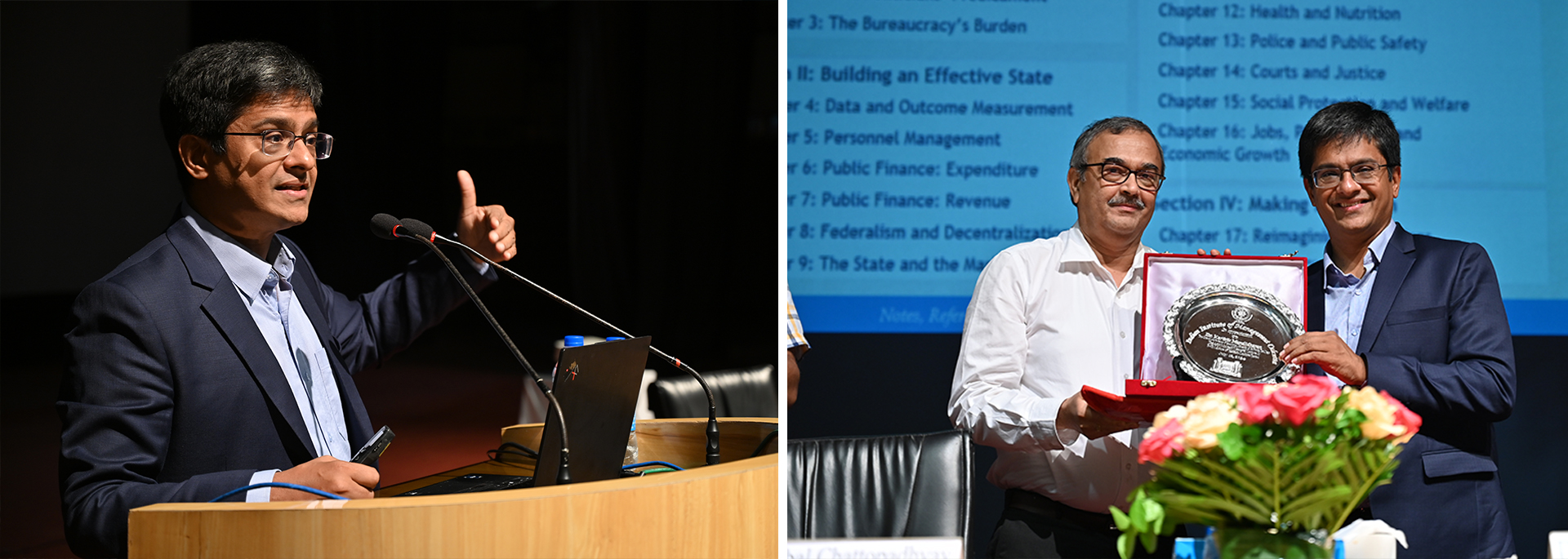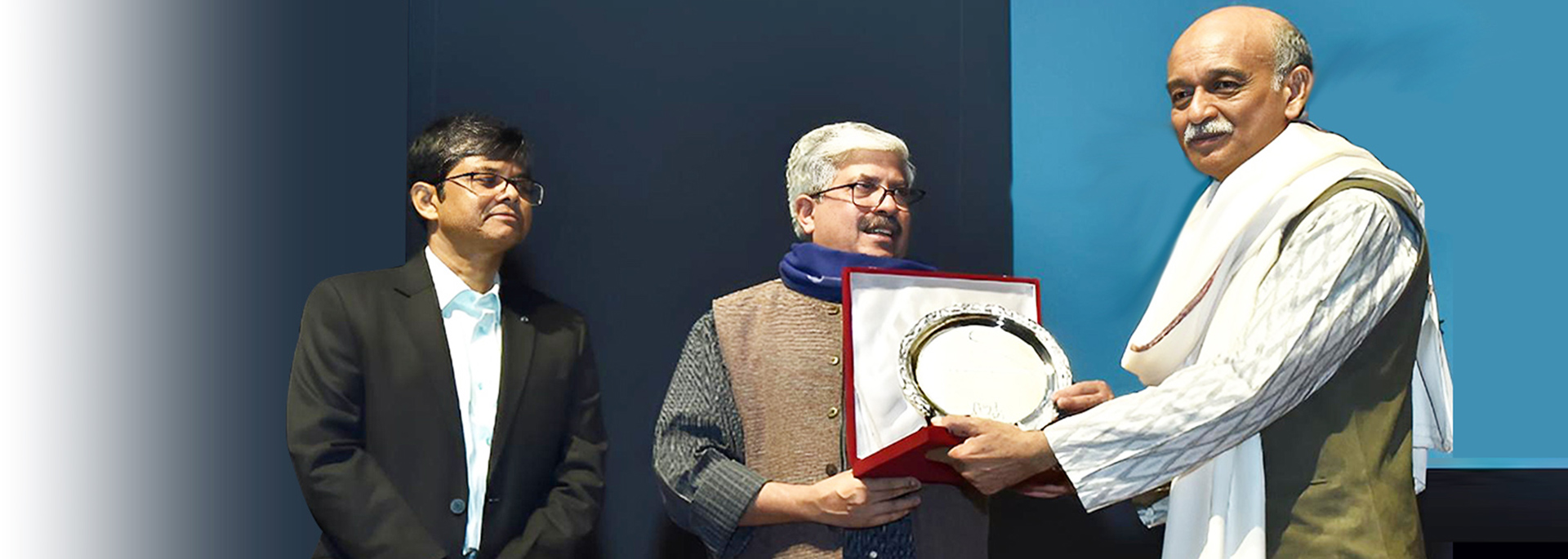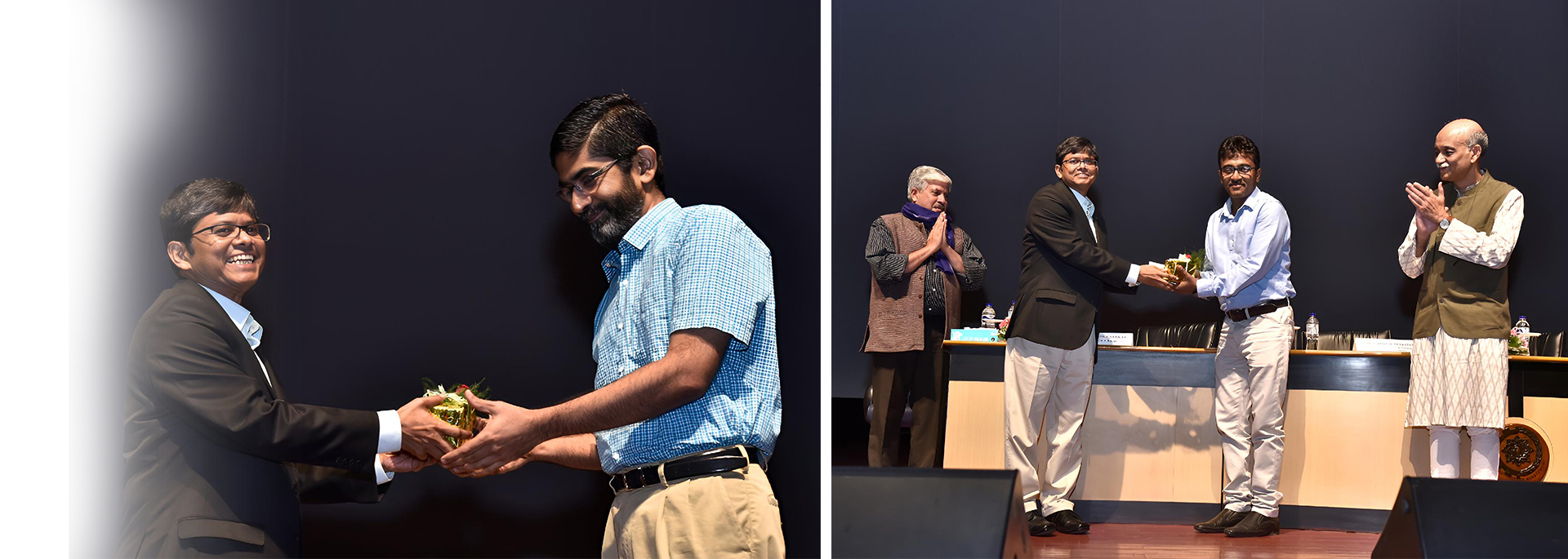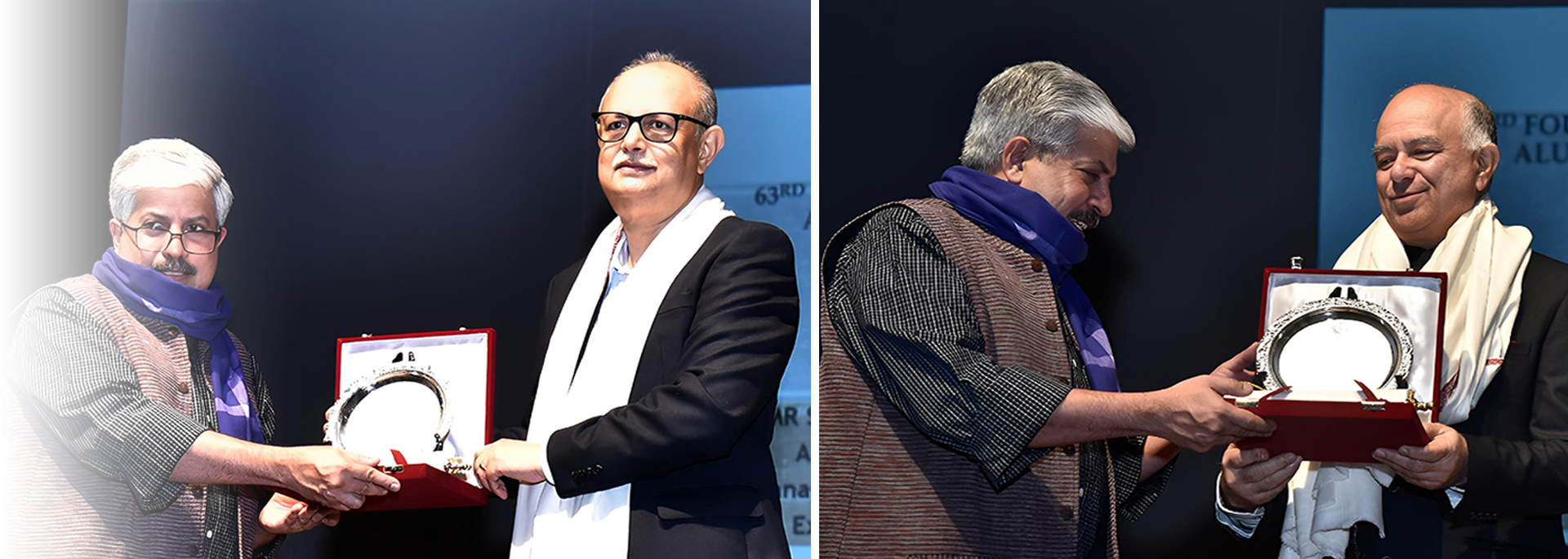
His sartorial style is a crisp, white kurta-pyjama teamed with thick, black-rimmed glasses. He idolises Sri Ramakrishna and Swami Vivekananda and quotes Sunil Gangopadhyay. He worships Satyajit Ray and Ritwik Ghatak and unwinds with Anjan Dutt’s songs. He loves eating fish and roaming the old lanes and bylanes of Calcutta at night.
If 37-year-old Vinayak Lohani is catholic in his tastes, he is single-minded when it comes to his cause: providing home, hearth and education to the poorest and most vulnerable of children through the largest free residential school in eastern India.
Vinayak, winner of The Telegraph Education Foundation’s certificate of honour at The Telegraph School Awards for Excellence 2014 on Saturday, was born in Bhopal but has made Bengal his home.
Vinayak had come to Bengal as a student, first to earn a degree in mining engineering from IIT Kharagpur and later an MBA from IIM Calcutta. It was while studying for his MBA that the then 20-something engineer sprang the first surprise of his career. He opted out of campus placements.
“I was the only one in IIM Calcutta’s history to do so!” he says with a laugh. “I wanted to do something in the social space. I wasn’t interested in a corporate career.”
By then, Vinayak had started skipping classes, writing journalistic pieces on social initiatives and volunteering with NGOs. He had worked with Infosys for a year in between his stints at IIT and IIM and realised that his calling lay elsewhere. Calcutta, with its “rich history of leaders and reformers”, fuelled his desire to be different.
“Being a good student from a middle-class family, engineering and MBA happened by default. But soon I found myself losing interest in a mainstream job and the corporate environment,” recalls Vinayak.
Vision & Vivekananda
For inspiration, Vinayak had Vivekananda. “I have always been inspired by the agents of change in society and the sense of sacrifice, service and devotion, especially Swami Vivekananda’s. I took diksha from the Ramakrishna Mission…spent time with monks. Mother Teresa’s influence was strong, as was the legacy of our freedom movement. I found no momentum to return to my hometown. All my thoughts became very Calcutta-centric.”
At 25, Vinayak became quite the non-conformist, determined to establish a reformatory institution of his own rather than be in the so-called rat race. “Doing what everybody else was doing didn’t excite me. My notion of success was different. I had been to the best of educational institutions, so I didn’t need to prove my abilities to anyone. I knew that if I put in my best I might be able to make it happen.”
Vinayak’s plans did irk his civil servant father, though. “My folks were worried whether I had the kind of maturity needed to carry out the responsibility of running an organisation, dealing with different domains and steering it safely and successfully.”
After moving out of IIM, he rented a small house in Sakherbazar in Behala. His plan was to start a free residential school for deprived children — the kind he had seen loitering on railway platforms and in red light areas. A few friends, researchers and professors from IIM were Vinayak’s “sounding board”.
Parivaar was born in 2003 but bringing up the child proved far from easy. “I prepared proposals, met people here and there, but all in vain because no one wanted to support something that was the wishful thinking of one individual,” says Vinayak.
With his efforts to raise funds leading nowhere, he rented a building near Thakurpukur with his earnings from lectures and tuitions to MBA aspirants. Vinayak started his mission with three kids, often not knowing where the next meal would come from. “It was a hand-to-mouth existence. I was spending whatever I was earning. My mother was my first donor,” he recounts.
In another six months, Vinayak had 55 children under his small roof, thanks to the support of “well-placed” IIM alumni who responded to his emailed appeal.
By the end of 2004, he had purchased a two-acre plot in Thakurpukur to build his dream brick by brick. Parivaar is currently spread across 20 acres. “Surely this is eastern India’s largest free residential institution for children today but not too many people know about it,” says Vinayak.
Parivaar path
Parivaar is today an institution that houses 672 boys and 298 girls whose lives have changed because of education and Vinayak’s encouragement. Some have gone on to get university degrees. “We have had a significant number of very inspired volunteers. They were mostly our donors who became our campaigners and spread the word actively,” says Vinayak.
Parivaar has two campuses that take in children between the ages of four and 10. The one for boys is called Parivaar Ashram. Located a few blocks away is the girls’ campus, called Parivaar Sarada Teertha. Each campus has dorm-like housing, a library, computer room, dining area, a soccer field and a volleyball court.
Parivaar also has its own co-educational school till Class X called Amar Bharat Vidyapeeth, located on the boys’ campus. “It’s not as if the kids’ stay is over once they are through with their education here. Would a parent ask a child to leave home? The older ones tutor the younger kids, earn pocket money and can move out of their own free will once they feel they are ready,” says Vinayak.
There are a few rules that set Vinayak’s initiative apart from others of its kind. “We don’t accept institutional support from any foreign agency. Ninety per cent of our donors are individuals of Indian origin, whether they are living in India or abroad. No government support. That’s how I could build it my own way because foreign or government agencies have their own parameters. I wanted to design my school my way, just like an artist would create his own piece of art,” he reveals.
Target 5,000
While his field teams are scouting for destitute children to bring home, Vinayak’s mind is preoccupied with the future challenges of the mission. “I hope to touch 1,200 by December. Since we have limited capacity at the moment, we admit children based on their neediness. Primarily orphans and the homeless are picked up from railway platforms and pavements, or those with one parent and incapable of taking care of the child.”
Apart from the city, Parivaar reaches out to rural areas, including the tribal belts of Midnapore, Bankura, Purulia and Jharkhand. The emphasis is on giving girls vulnerable to exploitation an opportunity to build their lives.
Vinayak’s IIT and IIM education hasn’t gone waste either. Parivaar is an example for institutions on how to “scale up” operations using entrepreneurial skills.
Unlike many social welfare organisations that are cagey talking about finances, Vinayak is upfront about money. “We raise around Rs 14 crore every year. I can raise Rs 100 crore over the next 10 years but I am not satisfied with that. For me, sky is the limit. I am taking Parivaar to 5,000 children in the next seven years. My aim is to convert Parivaar into the largest free residential school in the country.”
Model mission
The Parivaar model is already a case study at business schools. “A lot of people want to do things but don’t know how to get started. There’s a huge possibility of social enterprise and since I understand how it works, I want to help those who want to be agents of change — be it in education, health or livelihood,” says Vinayak.
His personal turning point was the decision to take the road less travelled, away from home and family. “When I took up the responsibility of these children I decided that I was not going to marry and raise a family. Otherwise, it wouldn’t have been possible for me to give myself completely, emotionally. I would have become nervous, I would have collapsed. So a strong focus was the emotional focus. I closed the door on any thoughts or feelings that might be distracting. And see what I have today, a family of 900!” he smiles.
Vinayak is now comfortable letting the institution run on “auto-pilot”. The faculty and his 179-strong office team take care of everything, his role being limited to “reviewing, mentoring and monitoring”. That is when he isn’t busy giving lectures at youth forums or in his new role as member of a special taskforce under the Union ministries of finance and women and child welfare. He also makes time for helping, mentoring and handholding young social entrepreneurs.
If there is one thing Vinayak is touchy about, it is about not being identified as “a Bengali”. His Bengali look, he says, has been “acquired through effort”. The dhuti was his choice of everyday attire until two years ago, when he switched to his trademark white kurta-pyjama.
“I would get offended when people wouldn’t take me as a Bengali. I have always identified with the Calcutta of the 1960s and ‘70s — the shilpis, buddhijibis and their simple-living-high-thinking philosophy that defined the city’s cultural aristocracy. Emotionally, I see myself as that and I have really tried to become one for all these years,” smiles Vinayak.



.png)




